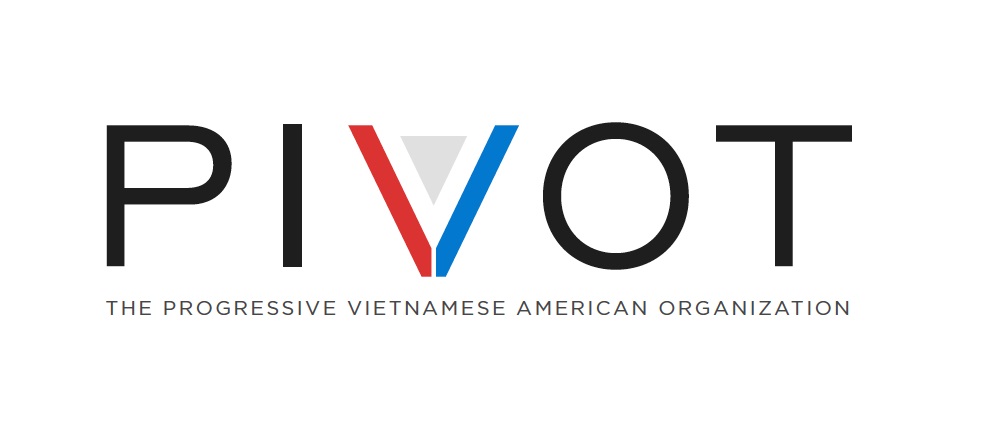Why Should Vietnamese Americans Care about Asian Pacific American Heritage Month
/May 22, 2019
Tung Nguyen, PIVOT President
Since 1992, the month of May has been designated by the U.S. government as Asian Pacific American Heritage Month (APAHM). It is a time to remember the history of Asians in America and to celebrate their culture and accomplishments. Coincidentally, APAHM immediately follows April 30th, the anniversary of the end of the Vietnam War and the beginning of the Vietnamese diaspora. To some extent, Vietnamese Americans should feel that APAHM is a remembrance and celebration of our arrival to America and our contributions to this great country.
Yet, many Vietnamese Americans do not identify with either APAHM or the Asian American movement. This is understandable for several reasons. First, Vietnamese history is full of conflicts with other Asian countries. Second, the movement that created the term “Asian American” as a unifying term for immigrants and children of immigrants from East Asia, Southeast Asia, and South Asia in the late 1960s and early 1970s was a part of the anti-war movement[NT1] . But after being in the U.S. for 43 years, it is time that we re-examine how Vietnamese Americans should relate to the Asian American movement.
The term “Asian American” covers more than 20 million Americans tracing their origins from more than 20 countries and speaking over 50 languages. From 2000 to 2015, the population grew from 11.9 million to 20.4 million, making it the fastest growing racial group[NT2] . With nearly 2 million people, Vietnamese Americans are the fourth largest group behind Chinese, Indian, and Filipino. Since 2010, more Asian Americans than Latinos have immigrated to the U.S., and 13% of all undocumented immigrants are Asian.
Vietnamese Americans of course remember our history of trauma, from the Vietnam War to the refugee experience. Other Asian American groups have suffered as well. In the 1800s, Chinese Americans were forced to work for little pay under very dangerous condition on the Transcontinental Railroad, which was completed 150 years ago. The Chinese Exclusion Act of 1882 is similar to what we see in today’s anti-immigrant policies of the Trump Administration. Interestingly, Japanese Americans in the 1800s distanced themselves from the Chinese. When Japanese Americans were incarcerated during World War II and lost their properties, some Chinese and Korean Americans wore buttons stating that they were not Japanese[NT3] . Filipino Americans were mistreated as farm laborers, and together with Latinos, they led the United Farm Worker movement to bring better conditions to the people harvesting our food.
Like Vietnamese Americans, many Asian Americans have done well. They have won Nobel Prizes, Pulitzer Prizes, and Olympic gold medals. There are Asian American chief executive officers of major companies, billionaires, and movie stars.
Like Vietnamese Americans, many Asian Americans have not done so well. Asian Americans are less likely than whites to own a home. Older Asian Americans are more likely to live in poverty than white Americans. Asian American women make nearly 20% less than white men, with Vietnamese American women among the lowest as they earn only 64% of what white men earn[NT4] . Most significantly, income equality has grown to the point that Asian Americans have the largest wealth gap of any racial or ethnic group[NT5] .
This duality of successes and challenges, within each Asian American group and among all Asian Americans, led to the creation of the model minority myth and the need for disaggregated data. The model minority myth, which states that all Asian Americans are very successful, was not created by proud Asian Americans. Instead, this myth was created by white social conservatives to drive a wedge between the coalition of African Americans, Asian Americans, Latinos, and other people of color fighting for civil rights. By focusing on some successful Asian Americans, the conservatives argued that racial inequalities were not due to racism from white people or from institutions.
While some Asian Americans were proud of this myth, it became detrimental to all Asian Americans, who ended up with less resources. In order to fight the myth, identify the needs, and obtain the appropriate resources for Asian American communities, Asian Americans have been fighting for disaggregated data, or collecting data by each Asian group and gender, and even immigration status. Vietnamese Americans have benefited from these efforts as we are among the most recent immigrants and thus had more needs and less political power. Indeed, no single Asian American group has sufficient political power because alone, each group constitutes less than 1.2% of the population.
The disaggregation of data, the celebration of each group’s unique history and culture, and the the need for unity to create sufficient capacity and political power is emblematic of the yin and yang of the Asian American movement. When do we come together? When do we go our separate ways? Vietnamese Americans have to make these choices as well when it comes to being a part of Asian America. We would do well to remember the proverb “Một cây làm chẳng nên non, ba cây chụm lại nên hòn núi cao.”
[NT1]https://www.nbcnews.com/news/asian-america/after-50-years-asian-american-advocates-say-term-more-essential-n875601
[NT2]https://www.pewresearch.org/fact-tank/2017/09/08/key-facts-about-asian-americans/
[NT3]https://www.nbcnews.com/news/asian-america/after-50-years-asian-american-advocates-say-term-more-essential-n875601
[NT4]http://www.nationalpartnership.org/our-work/resources/workplace/fair-pay/asian-women-and-the-wage-gap.pdf
[NT5]https://www.pewsocialtrends.org/2018/07/12/income-inequality-in-the-u-s-is-rising-most-rapidly-among-asians/
